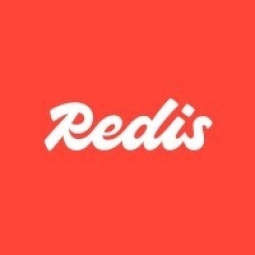Technology Category
- Analytics & Modeling - Real Time Analytics
- Platform as a Service (PaaS) - Application Development Platforms
Applicable Industries
- Cement
Applicable Functions
- Maintenance
- Product Research & Development
Use Cases
- Real-Time Location System (RTLS)
- Time Sensitive Networking
Services
- Cloud Planning, Design & Implementation Services
About The Customer
HackerRank is the industry leader in pre-screening, technical assessments, and remote interview solutions for hiring developers. The platform is used by more than 11 million developers to practice coding skills, prepare for job interviews, and get hired. HackerRank’s overarching goal is to become the single source of truth for every engineer’s technical ability. Every day, more than 70,000 candidates compete in code competitions and are subsequently ranked on the company’s public, global leaderboard. The leaderboard is one of the most heavily used components in HackerRank’s system, and must perform under significant stress during peak times, from large coding events to surges in company recruiting.
The Challenge
HackerRank, a leading platform in pre-screening, technical assessments, and remote interview solutions for hiring developers, was faced with the challenge of needing a fast, scalable, and reliable data platform that required minimal maintenance and configuration. This was crucial for the company to focus on innovation and to fulfill its mission of becoming the single source of truth for every engineer’s technical ability. Additionally, HackerRank needed a real-time leaderboard to showcase top developers. The company was using multiple solutions to cobble together a data layer, which was not efficient or sustainable for its growing needs.
The Solution
HackerRank adopted Redis Cloud as a unified data platform to handle all its use cases. Redis Cloud was able to handle large-scale recruiting events where over 20,000 developers take coding tests simultaneously with ease. It also provided in-memory performance to keep real-time standings, regardless of the number of developers taking tests at the same time. HackerRank used Redis Cloud to build not only its caching layer but also its database for all of its real-time use cases. For code compilation and execution, HackerRank leveraged the RedisJSON module to provide live execution status, reducing latency and providing real-time updates to users. The RedisBloom module was used to implement key aspects of its global leaderboard.
Operational Impact
Quantitative Benefit

Case Study missing?
Start adding your own!
Register with your work email and create a new case study profile for your business.
Related Case Studies.

Case Study
System 800xA at Indian Cement Plants
Chettinad Cement recognized that further efficiencies could be achieved in its cement manufacturing process. It looked to investing in comprehensive operational and control technologies to manage and derive productivity and energy efficiency gains from the assets on Line 2, their second plant in India.

Case Study
Digital Transformation of Atlanta Grout & Tile: An IoT Case Study
Atlanta Grout & Tile, a Tile, Stone & Grout restoration company based in Woodstock, Georgia, was facing challenges with its traditional business model. Despite steady growth over the years, the company was falling behind the web revolution and missing out on the opportunity to tap into a new consumer base. They were using independent software from different vendors for each of their department information and workforce management. This resulted in a lot of manual work on excel and the need to export/import data between different systems. This not only increased overhead costs but also slowed down their response to clients. The company also had to prepare numerous reports manually and lacked access to customer trends for effective business decision-making.

Case Study
Revolutionizing Construction Equipment Rental: A Case Study on ProsRent and ENO8
ProsRent, a startup that won the 'Best Financial Opportunity' and 'Best Pitch' at CodeLaunch 2016, aimed to revolutionize the way construction professionals source and rent heavy equipment. In the construction industry, project managers and contractors typically rent heavy equipment from supply companies. However, predicting inventory can be challenging, and finding the required equipment at the right time and place can be a hassle. If the preferred vendor doesn't have the required equipment, it results in wasted time and money in searching for it, often leading to higher costs due to non-preferred rates and increased delivery costs if the vendor is located far from the job site. Suppliers, on the other hand, desired access to a wider base of trusted renters that they didn't have to vet themselves and wanted to offer dynamic rental pricing based on demand and availability in their market. ProsRent's challenge was to produce a minimum viable product that was fast and first to market but also strong enough to engender loyalty and repeat business from the target market.

Case Study
AI-based Automation for Commercial Office HVAC: A Verdigris Case Study
Modern buildings are required to run longer hours, support a variety of end uses, and contribute to higher levels of economic productivity, leaving a thin margin for error. However, even the most advanced building and environmental control systems have failed to adequately support facilities and operations management. Buildings are often inefficient and the people using them are underserved. To meet occupant comfort and maintain cost and energy efficiency, a dynamic, AI-assisted approach is needed.

Case Study
Revamping EE's Legacy ERP: A Case Study on BT's Strategic Transformation
EE, even after its merger with BT, was operating its ERP estate on legacy infrastructure, hosted on the premises of a third-party supplier. This outdated system resulted in a volume-based operational model, higher time to market, longer delivery cycles, and unsatisfactory customer experience. BT recognized the need for a strategic transformation of these aging ERP systems and sought a partner who could proactively manage application services. The partner was also expected to handle development requirements associated with application management services, drive accountability, and ownership with a time and target-driven transformation of these services. BT's primary goals were to improve customer experience, reduce cycle time, and measure these improvements with precision.








